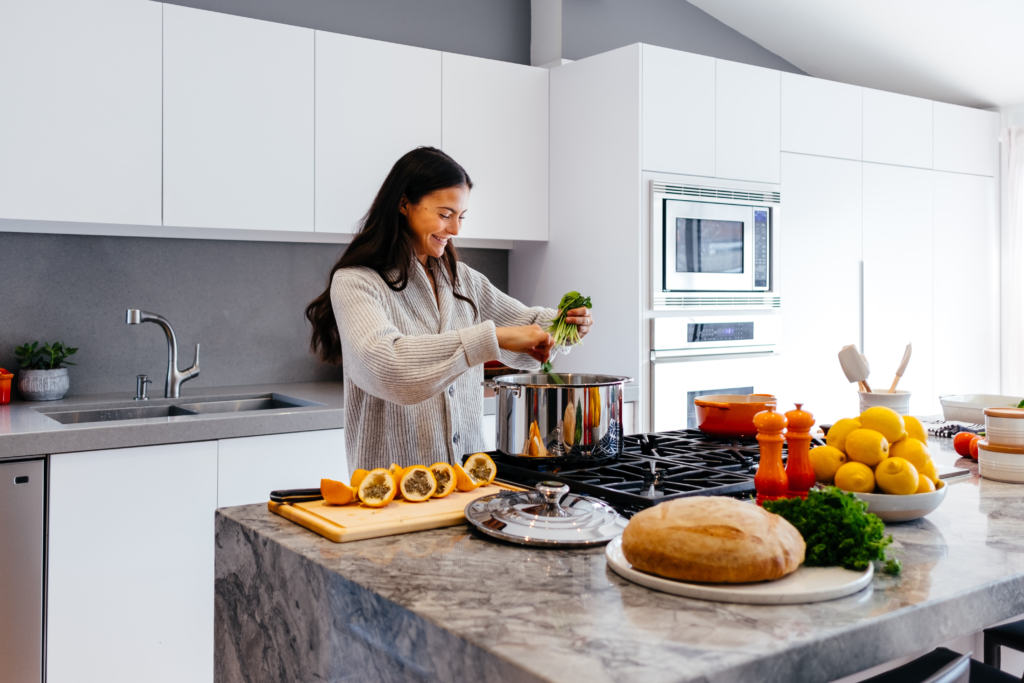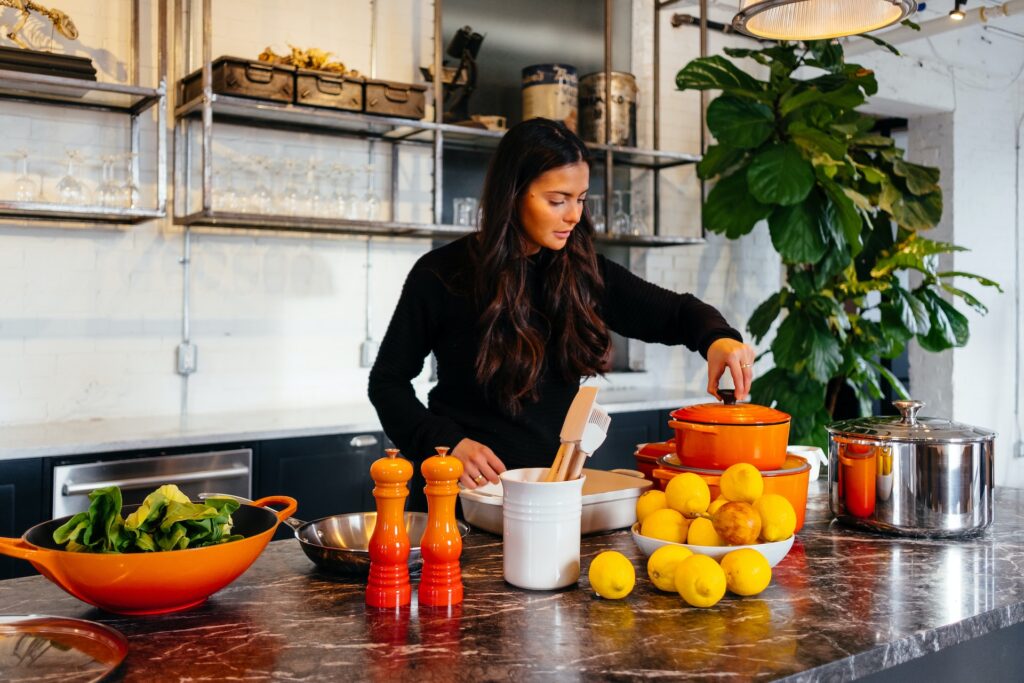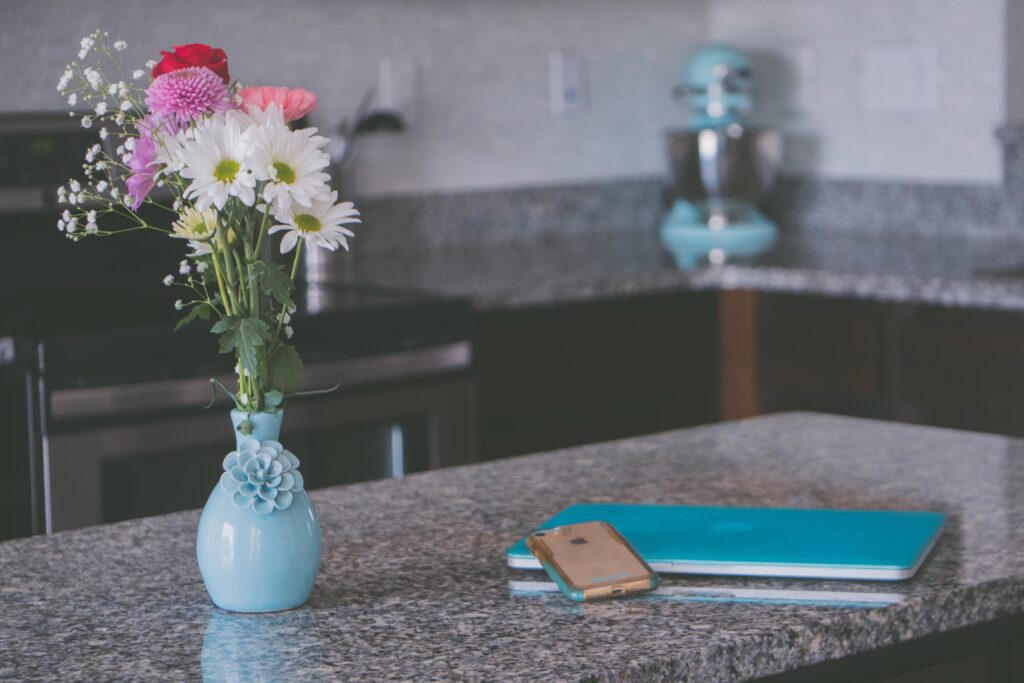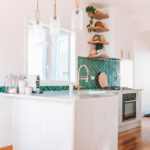Granite benchtops add a touch of elegance and sophistication to any kitchen or bathroom. Known for their durability and resistance to heat and scratches, granite surfaces can maintain their stunning appearance for years with proper care and maintenance.
However, like any other natural stone surface, they require regular cleaning and maintenance to ensure their longevity and keep them looking their best. In this article, we will show you simple and effective ways to clean and maintain your granite benchtop.
You will learn how to remove tough stains and keep your benchtops looking new. With our expert tips, you can have a beautiful granite surface in no time.
Key Points
Cleaning your granite benchtop is easier than you think. Here are six easy steps to clean your granite stone benchtop, ensuring your stone benchtops stay in pristine condition.
1. Start by clearing the surface of the benchtop removing any objects or debris.
2. Make a cleaning solution by mixing warm water with a few drops of mild dish soap or a granite-specific cleaner. Avoid using harsh chemicals, vinegar, lemon juice, or abrasive cleaners, as they can damage the surface of the granite.
3. Dampen a soft clean cloth or sponge in the cleaning solution, then gently wipe down the benchtop, removing any dirt or stains.
4. Pay special attention to areas that may be prone to spills, such as around the sink or cooktop. Use a soft toothbrush or a small brush to clean hard-to-reach areas or crevices.
5. Rinse the cloth or sponge with clean water and wipe down the benchtop again to remove any soap residue.
6. Dry the benchtop thoroughly with a clean, dry cloth to prevent water spots or streaks.
7. If the stains persist even after cleaning, consider seeking professional help
For maintenance, here are a few steps you can do to keep your granite benchtop on top condition.
1. Apply a granite sealer periodically, following the manufacturer’s instructions. This helps protect the surface from stains and spills.
2. Avoid placing hot pots or pans directly on the granite benchtop, as it can cause thermal shock and potentially crack the stone. Always use trivets or hot pads.
3. Clean up spills immediately to prevent staining. Even though granite is generally resistant to stains, certain acidic substances like red wine or citrus juices can cause discolouration if left for too long.

How To Clean Granite Benchtops
Cleaning your granite benchtop is a simple process that can be done with a few easy steps.
Clear Any Loose Debris
To clear any loose debris from your benchtop, you’ll need a soft-bristle brush and a dustpan.
Start by gently sweeping the surface of the benchtop in a circular motion, using the brush. This will help remove any loose dirt, crumbs, or other debris without scratching the granite. Once you’ve cleared the surface, use the dustpan to scoop up the debris and dispose of it in a trash bin.
Choose Your Cleaner
Choosing the right cleaner for your granite benchtops is crucial for their maintenance. Select a cleaner that’s both safe and effective for granite.
Harsh chemicals and abrasive cleaners should be avoided as they can cause damage to the porous stone surface.
Opt for a mild dish soap or a cleaner specifically designed for granite. These cleaners are gentle enough to clean your granite benchtops without causing any harm.
To create a cleaning solution, mix a few drops of the chosen cleaner with warm water. This solution will be effective in removing dirt and grime from your granite surfaces.
Start Scrubbing
Gather a soft cloth or sponge and the cleaning solution mentioned earlier. Soak the cloth or sponge in the solution and make sure it’s not dripping wet.
Gently wipe down the entire surface of the granite benchtop, ensuring that you remove any dirt or stains that may be present.
Be careful not to apply too much pressure, as excessive force could potentially damage the stone. Once you’ve scrubbed the surface, take a clean cloth and wipe away any residue left behind. This final step will leave your granite benchtop looking shiny and spotless.
Use a Toothbrush to Clean Specific Areas
Certain areas, like around the sink or cooktop, tend to get dirty and stained more easily. To make sure these spots are completely clean, grab a soft toothbrush or a small brush and gently scrub away any dirt or grime.
The bristles of the toothbrush can reach into crevices and hard-to-reach areas that a cloth or sponge can’t. When using a toothbrush, be gentle with your scrubbing to avoid scratching the surface. Remember, the goal is to clean, not to damage your benchtop.
Rinse the Surface
Rinse the surface with clean water after scrubbing. This step is important because it helps remove any leftover soap residue from cleaning.
Take a cloth or sponge, rinse it with clean water, and wipe down the entire surface of the benchtop again. By doing this, you ensure that no soap residue is left behind, which can dull or leave streaks on the granite.
Don’t forget to thoroughly rinse the cloth or sponge to avoid transferring any soap residue back onto the benchtop.
Dry the Stone Benchtop Thoroughly
To keep your granite benchtop looking its best, it’s important to dry it thoroughly after cleaning. This will prevent water spots and streaks from forming.
After rinsing the surface, take a soft cloth and gently wipe away any remaining moisture. By doing this, you’ll be able to maintain the benchtop’s shine and protect it from potential damage.
Water spots and streaks can occur if water is allowed to air dry on the surface. To avoid this, make sure to remove all moisture by using a dry cloth.
Consider Professional Help if Stains Don’t Go Away
Even with our best efforts, certain stubborn stains can prove to be quite challenging to remove. If you find that your cleaning attempts have been unsuccessful in eliminating these persistent stains, it is advisable to consider seeking professional help.
Professional cleaners possess specialized knowledge, expertise, and access to advanced cleaning techniques and equipment that can effectively tackle even the most stubborn stains.
They have experience dealing with a wide range of stains, whether it’s on carpets, furniture, walls, or other surfaces, and understand the appropriate methods and products to use for each situation.
Entrusting the task to professionals can help you have peace of mind knowing that they will employ the most effective and efficient methods to address the stains.
They will be able to assess the nature of the stain, its composition, and the surface it has affected to determine the most appropriate course of action.

Getting Rid of Stains From Granite Stone Benchtops
Are you struggling to remove stubborn stains from your granite benchtops? Don’t worry, there are simple solutions to tackle this problem.
For oil-based stains, you can create a paste using baking soda. Apply the paste to the stain, cover the area, and let it sit for a few hours. After that, use a clean cloth to wipe away the paste and clean the residue with warm water and dish soap.
On the other hand, if you’re dealing with water-based stains, hydrogen peroxide is your go-to solution. Follow the same steps as with the baking soda paste.
Apply the hydrogen peroxide to the stain, cover it, and let it sit for a few hours. Then, use a clean cloth to wipe away the peroxide and clean the residue with warm water and dish soap.
Helpful Tips To Care for Your Granite Benchtop
Maintaining your granite benchtops is essential to keep them looking their best. Here are a few tips that can help you maintain your clean stone benchtops, ensuring your kitchen benchtops are at its most pristine condition.
Apply Granite Sealants
Maintaining the shine and cleanliness of your granite benchtops is easy with the application of a granite sealer.
These sealants create a protective barrier that prevents stains and spills from penetrating the surface of the granite. By applying a sealer, you can achieve a spotless and shiny granite benchtop.
To apply the sealant, start by thoroughly cleaning the surface of the benchtop. This ensures optimal adhesion of the sealer.
Follow the instructions provided by the manufacturer for the specific sealant you’re using. Applying the sealer evenly is important, and you can do this using a clean cloth or sponge. Allow the sealer to dry completely before using your benchtop again.
Avoid Placing Hot Pans Directly into Your Benchtop
To keep your granite benchtop looking its best, avoid placing hot pans directly onto the surface. While granite is a durable material, it can still be vulnerable to thermal shock, which can lead to cracks in the stone.
To protect your benchtop, always use trivets or hot pads as a barrier between the hot items and the surface. This simple step will help maintain the shiny and spotless appearance of your granite benchtop.
Placing hot pans directly on the surface can also cause stubborn stains or discolouration that may be difficult to remove.
Using trivets or hot pads can prevent these issues and ensure that your granite benchtop remains in pristine condition.
These protective accessories not only safeguard your benchtop but they also add an extra layer of style to your kitchen.
Clean Spills Promptly
If a spill happens, it’s crucial to clean it up promptly to prevent any lasting damage. While granite is generally resistant to stains, certain acidic substances like red wine or citrus juices can still cause discolouration if not dealt with quickly.
Start by removing any excess liquid using a clean cloth or paper towel. Next, use a gentle cleaning solution that’s specifically designed for granite surfaces.
Avoid using harsh chemicals or abrasive cleaners, as they can harm the surface. With the cleaning solution and a soft cloth, gently wipe the affected area, ensuring that you remove all traces of the spill. Finally, make sure to thoroughly dry the benchtop to achieve a shiny and spotless result.

How Stone Protection Can Help Deep Clean Your Granite Benchtops
Stone Protection is a leading provider of professional stone cleaning services with a specialization in deep cleaning granite benchtops.
With our experienced team and commitment to delivering high-quality work, we can ensure the restoration and preservation of your granite surfaces.
Our professional team is skillfully trained in utilizing the latest techniques and tools to effectively clean and revive granite benchtops.
Allow us to restore the natural beauty of your granite benchtops and provide you with a clean and hygienic surface that you can be proud of. Contact us today to schedule a consultation and experience the difference our professional team and high-quality work can make.
Frequently Asked Questions
Do granite benchtops need to be sealed?
Yes, granite benchtops need to be sealed in order to protect them from staining and damage.
How do you get water spots off granite?
Water spots can be removed from granite by using a solution of warm water and mild dish soap or a mixture of equal parts water and isopropyl alcohol. Gently scrub the affected area with a soft cloth or sponge, then rinse and dry thoroughly.
Can you use vinegar on granite?
No, you should avoid using vinegar on granite as it is acidic and can damage or etch the surface of the stone.
How do you remove cloudy film from granite?
A cloudy film on granite can be removed by cleaning the surface with a mixture of warm water and a few drops of dish soap. Rinse thoroughly and dry with a soft cloth or towel.
Why are my granite countertops hazy?
Hazy granite countertops are often caused by a build-up of soap residue or mineral deposits. Regular cleaning with a mild dish soap and water solution should help to keep the countertops clear and free of haze.
How do you remove oxidation from granite countertops?
To remove oxidation from granite countertops, create a paste with baking soda and water. Apply the paste to the affected area, scrub gently with a soft cloth, then rinse and dry thoroughly.
What permanently stains granite?
Certain substances, such as acidic liquids like lemon juice or red wine, oil-based stains, and pigmented liquids like coffee or ink, have the potential to permanently stain granite if not promptly cleaned up.





